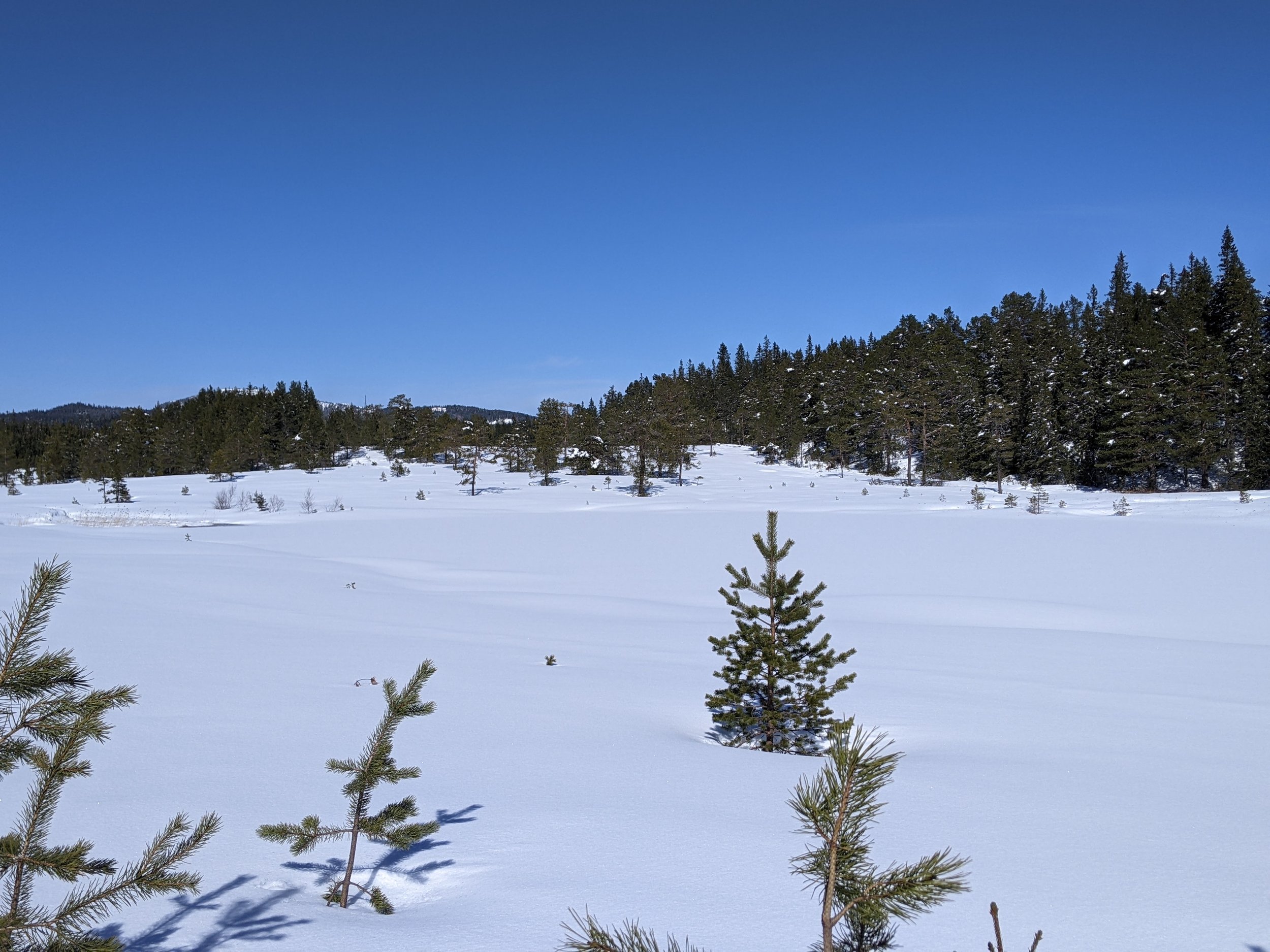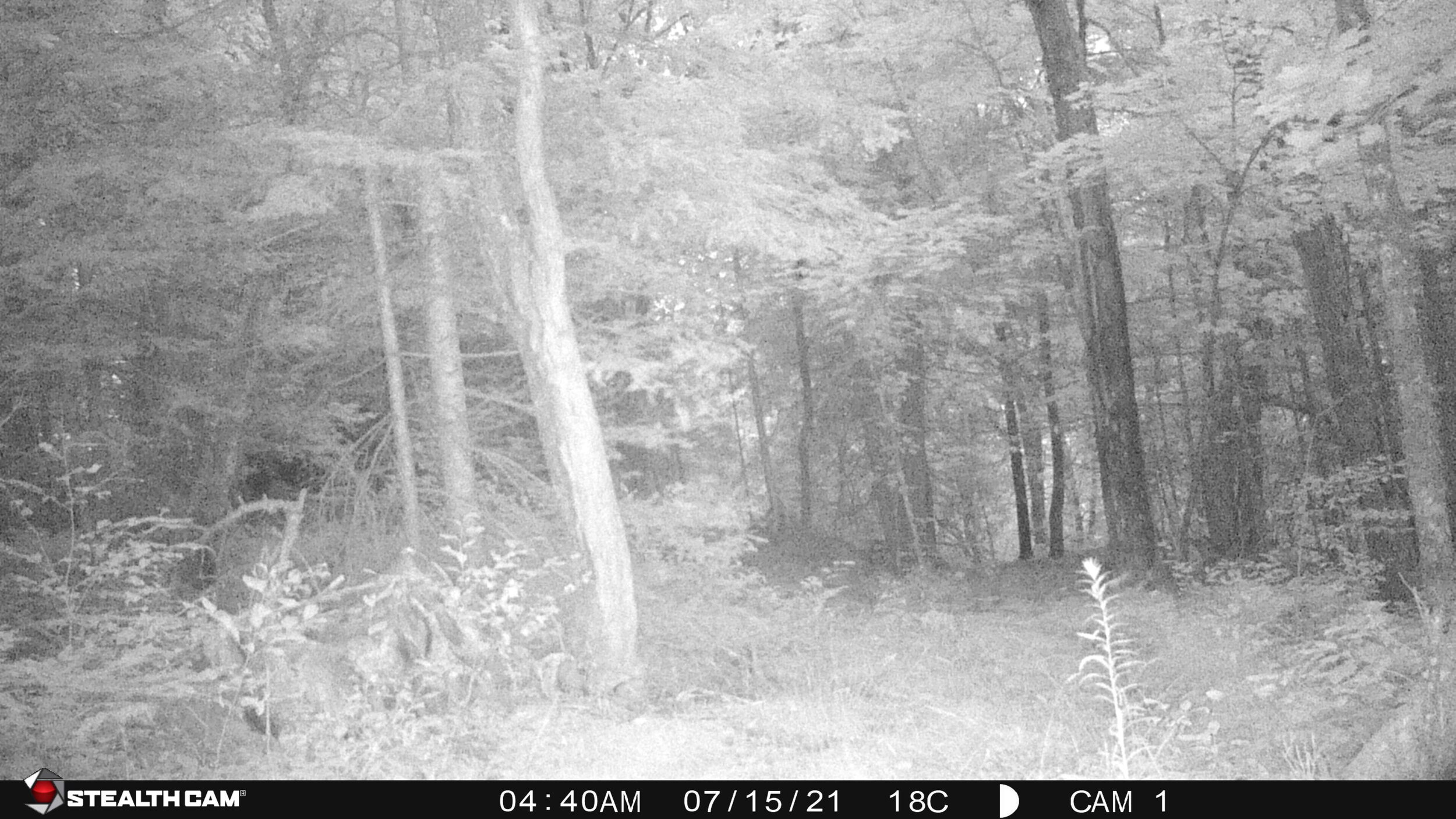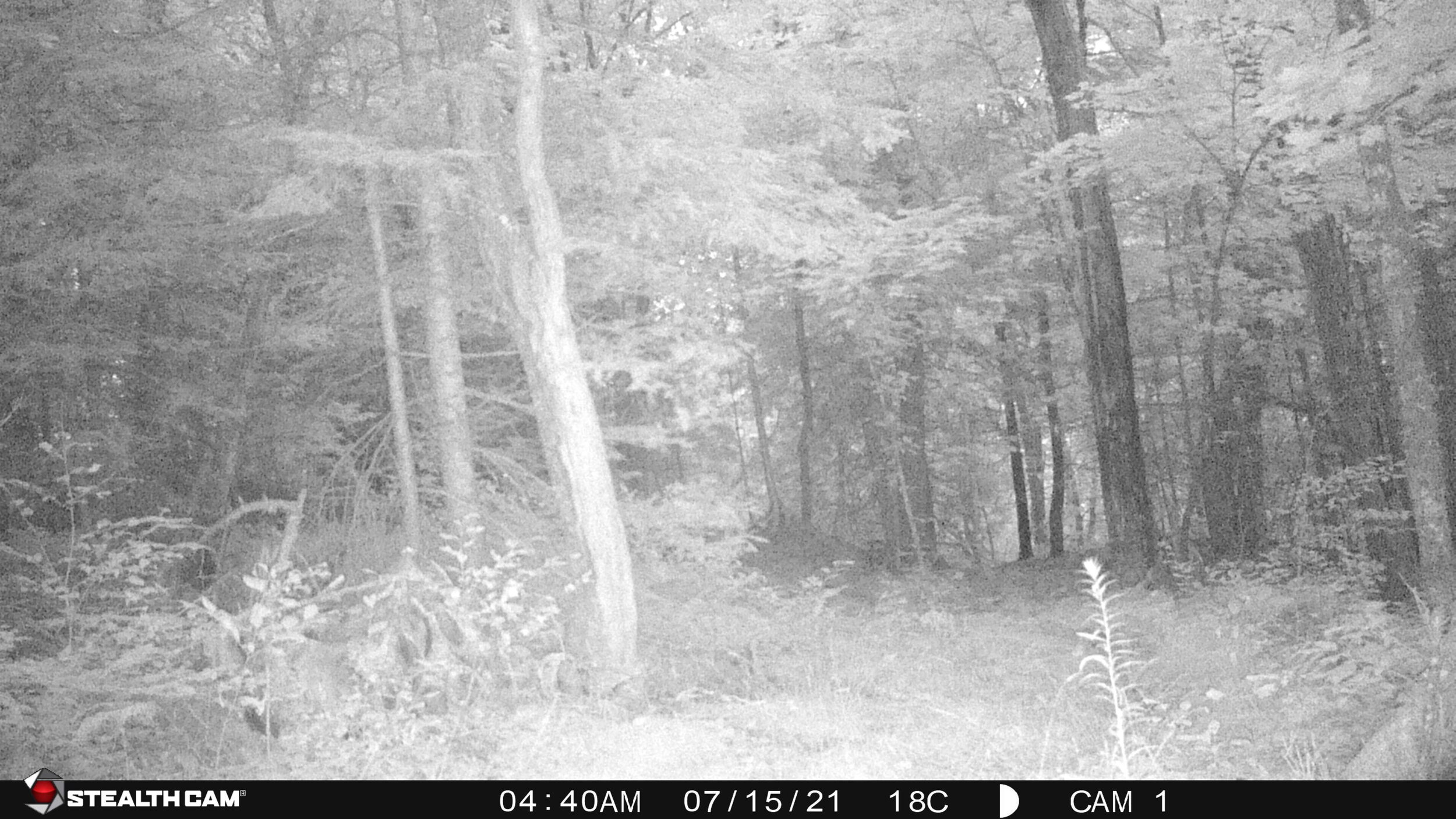Recently I was spending a week in Trondheim, Norway, and tried desperately to find interesting animals. It should have been pretty straightforward; there are some really good spots for animals in the area. However, April is not the ideal time of year, things are far too frozen, and I mostly failed to find my target species. I did get some good local knowledge, though, so I thought I’d post what I heard - and what I did manage to find.
Muskox
The train station where you get off to look for musk ox.
The main draw in the area, for me at least, are the world’s most accessible wild muskox. Reintroduced to the alpine plateau of Dovrefjell, they can been seen relatively easily according to this website. Just hop on a train in Trondheim, hop off at Kongsvoll, and hike 3ish km! That is amazingly accessible for the world’s most remote northernly hoofed mammal.
However, note that all the pictures on that website appear to be taken in summer. In April, the place is snow covered and bleak. The train station is a the bottom of a gorge through the mountains, in mid-April I found it snowy but sunny and pleasant with a temperature around zero. That is not where the muskox live, however. They live on the plateau east of the gorge.
I took this picture standing at the train station at the bottom of the gorge, looking east. These buildings (which were locked up) mark the start of the muskox trail, which leads up the ridge behind the buildings and up onto the plateau beyond, where the musk ox live.
The first couple km of the muskox trail lead up the eastern wall of the gorge and over the ridge - not an easy stroll, especially in knee-deep snow. And once I got over the ridge, the temperature plummeted. This itself was not a big problem - I was dressed for this - but it does make the experience significantly less comfortable.
A view of the beech forest that covers the sides of the gorge that I hiked up. After this point my phone got too cold and stopped working, so there are no more pictures. The plateau looked the same as this, but without the trees.
I hiked along the Muskox trail towards the Høgsnyta lookout. Though muskox can be found anywhere along the trail, they are most commonly seen from the lookout (apparently). As I walked towards the lookout the wind picked up, and with it, snow squalls blocked my view to the point where, a few times, I had to stop and wait for them to die down because I couldn’t seen the ground through all the white and couldn’t tell if I was walking on flat ground or about to go over a cliff! So I never made it to the lookout, and I didn’t see any muskox.
Rock Ptarmigan
Here’s one I saw: I flushed on at the edge of the tree line while walking back to the train after my failed attempt to see the musk ox.
Mountain Hare
These are present in the forest that grows along the sides of the gorge. I saw three between my trips up and down the gorge. Other people also report seeing them, so it seems they’re pretty common at the site.
Reindeer
They exist in large herds in Dovrefjell but the movement of the herds is apparently unpredictable. Very hard to see.
Red Deer
Apparently common on Hitra Island, in particular around Sandstad. Unfortunately I didn’t make it to the island.
Roe Deer
Apparently also common on Hitra Island. I didn’t see them near Trondheim but I did see them hiking north of Sognsvann subway station in Oslo, on the hiking trail that runs along the eastern side of Sognsvann Lake.
Eurasian Beaver
The dam where you can see beavers was completely frozen over. I couldn’t even find any openings where the beavers might be coming up for air. It was just way too early in the season to be looking for them.
There is a well-known spot for beaver in Trondheim - several people pointed me to the same place. Theisendammen, on the western edge of the city, has a family of beavers, and apparently the best place to wait for them to appear is from the lookout platform at 63.420690, 10.344516. Again, however, I would recommend looking for them later than April, because the whole dam was still solidly covered with ice (and snow) when I visited. In Canada I’m used to looking for beavers in gaps in the ice of frozen ponds and lakes, but here there were no gaps, just solid ice.
Eurasian Otter
Otters are regular along the ocean shoreline in Trondheim, there were sightings while I was there. However, there don’t appear to be regular spots, you just have to luck upon one, and I never did.
Black Grouse & Western Capercaillie
Both are apparently common in Bymarka Nature Reserve, the hill to the east of Trondheim. I also heard a rumour that there is a population of Siberian Jays here. I took the tram to Lian Station and walked uphill, but didn’t luck upon any of these three.
Adder
Buried somewhere under all this snow is an adder hibernaculum.
I’ve seen pictures online from Norway and Sweden of adders out basking on snow in the spring, and I found them to be such a strange juxtaposition. I was hoping to see this phenomenon in person as someone gave me the location he’d seen an adder just a week before I arrived. Unfortunately there had been a lot of snowfall in the intervening week, and the site, 63.376644,10.285963, was not accessible without snowshoes (which I did not have).
White-throated Dipper
Let’s end on a happy note. This is one target animal I did manage to find in Trondheim. I’m not sure how common dippers are in urban environments, but I found this one at 63.431136, 10.363289, smack in the city night next to a construction site.




























